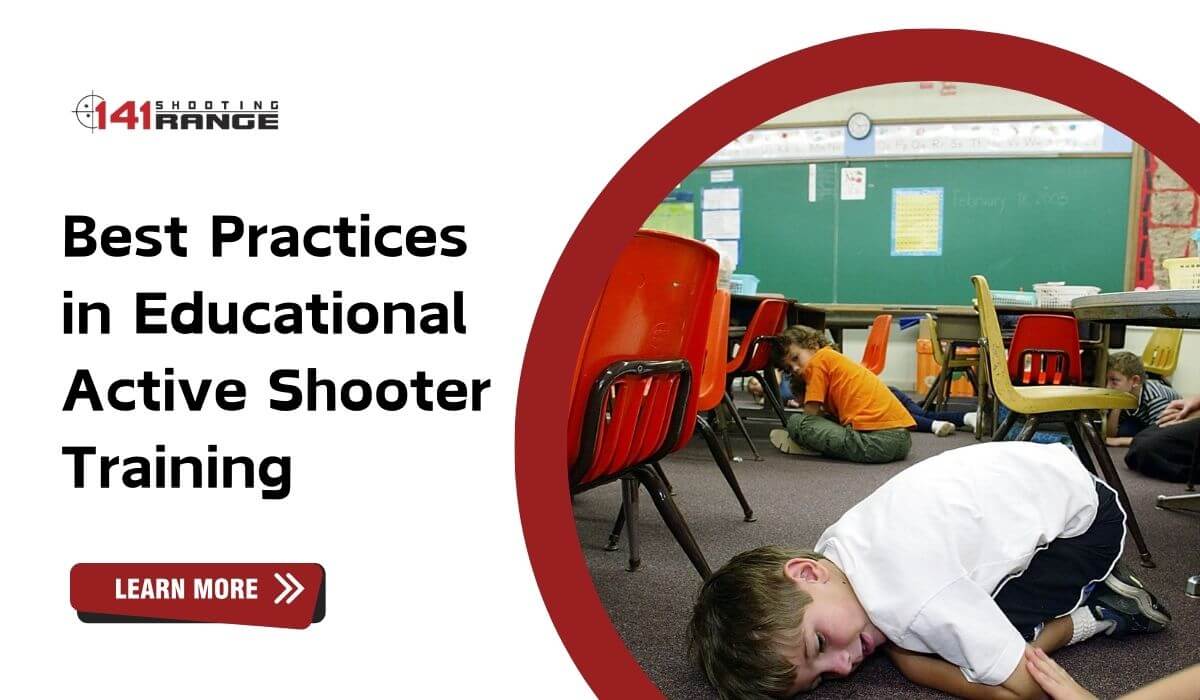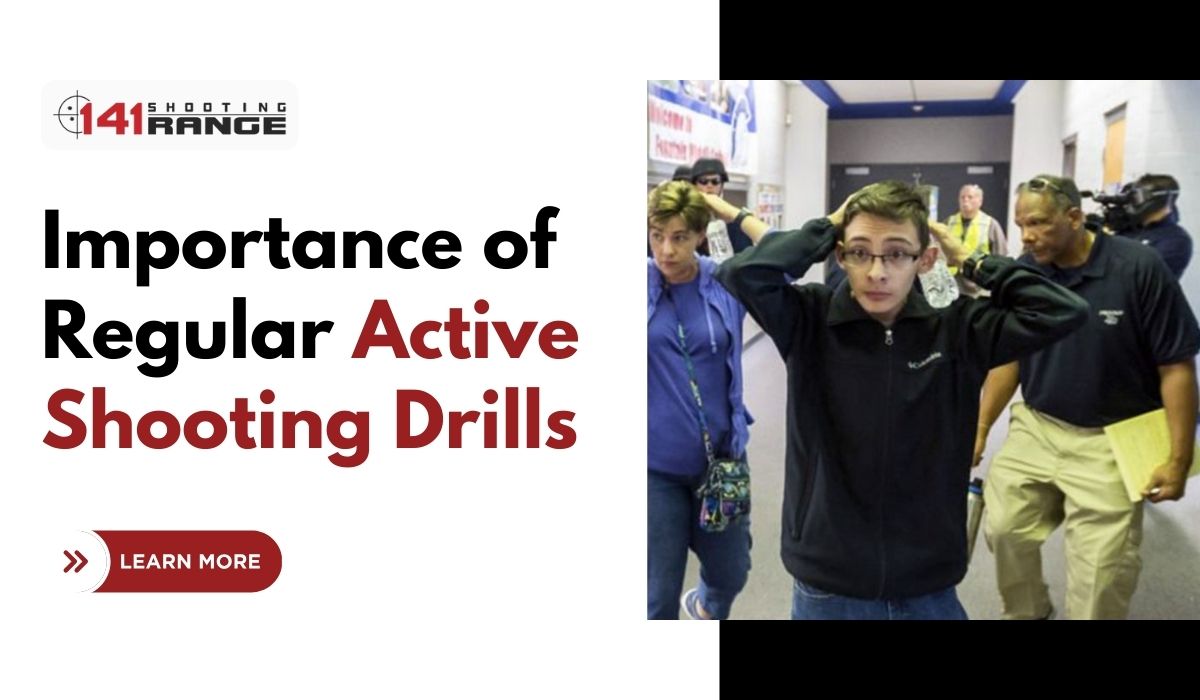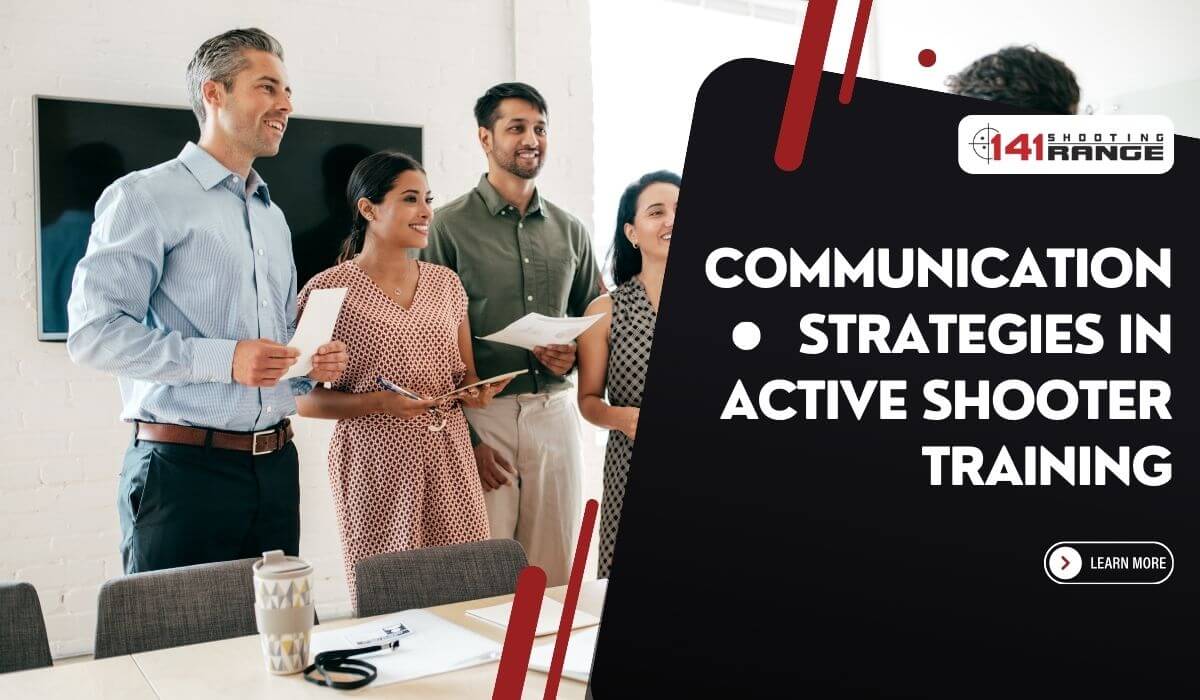It’s not just important; it’s morally necessary to protect places of learning, with a focus on information-seeking and unwavering commitment to safety. We must also strengthen the educational landscape so that it can continue to foster young brains.
Our schools’ security is everyone’s responsibility, and we will all have to pitch in as we begin our investigation. Educators should receive active shooter training, as security and information dissemination go hand in hand in educational institutions.
Ensuring Campus Safety Best Practices in Educational Active Shooter Training
The Role of Training in Campus Safety:
Providing a safe learning and working environment is the mission of any educational institution. Campus safety is critically important, particularly in light of possible dangers such as active shooter situations.
Effective active shooter training provides a systematic framework for reaction, cooperation, and resilience in protecting these settings from unexpected threats. Building a safe campus is about more than following the rules. It’s about ensuring all students, faculty, and staff can thrive and succeed without fear.
The Unique Challenges of Educational Settings:
Active shooter incidents in educational settings require a nuanced examination of the complex dynamics. Educational institutions have a wide range of age groups and abilities, ranging from young children to adults.
Diverse age groups necessitate age-appropriate training to ensure everyone understands and can execute the response protocols. Furthermore, educational campuses’ sheer size and layout pose logistical challenges during an active shooter event.
Maintaining a nurturing learning environment and ensuring robust security measures is challenging. Education settings must address these challenges when designing active shooter training programs.
Education Institutions: Creating Customized Training:
Schools must tailor active shooter training to their needs to ensure student and employee safety. Education settings face specific obstacles, such as dealing with diverse and vast populations, addressing different age groups, etc.
Education institutions must consider details like classroom-friendly lockdown protocols, age-appropriate evacuation plans, and effective communication methods. To make a safe place, security measures must be tailored to meet the unique dynamics of educational settings.
Quick response through technology:
Technology is pivotal in ensuring rapid response during critical situations in today’s fast-paced world. Notification systems and mobile apps stand as sentinels, swiftly disseminating crucial information to students, staff, and law enforcement. In an active shooter situation on campus, these digital tools bridge the gap between awareness and action.
Education technology enables a coordinated response, minimizes response time, and ultimately enhances overall security and safety. Campuses need technological solutions to respond quickly and effectively to active shooter threats as threats evolve.
Drilling realistic scenarios:
In an active shooter drill, staff and students practice realistic scenarios to prepare for unexpected problems that may arise. These exercises go beyond classroom instruction by giving participants real-world experience amid a simulated crisis.
Through these simulations, participants train their reflexes and build muscle memory, allowing them to respond with poise and precision. In realistic scenario drills, people can learn about active shooter situations firsthand, helping them become more aware of their surroundings.
Students practice and improve their answers by studying the methods in a controlled setting. These drills bridge the gap between theory and practice, improving students’ confidence and accuracy in the face of unanticipated challenges.
Recognizing signs and communicating with educators:
Training for educators is crucial for campus safety as it strengthens the barriers around our educational environments. Teachers receive specialized training to identify the most subtle warning signs of danger. Comprehending signs of behavior, changes in attitude, or facial expressions that can point to deeper problems is part of this.
Educators must learn to communicate effectively during an active shooter scenario so students can receive life-saving information. Furthermore, teachers act as first responders, ensuring that children are safe and leading them to safety. By encouraging a safety climate beyond the classroom, this program emphasizes teachers’ responsibility to ensure their children’s safety.
Providing age-appropriate training to students:
Educators must recognize that children of different ages require different active shooter training. Training should be age-appropriate so kids can learn at their own pace. Older students should have more advanced lessons, while younger students should learn basic survival skills.
By teaching kids age-appropriate skills, they develop understandable and practical abilities they can apply in high-pressure situations. Students can study without distraction and prepare for emergencies without feeling anxious in the setting.
Law enforcement and emergency services coordination:
Schools, police departments, and emergency services must work together effectively during a crisis. Quick and coordinated responses are crucial to minimizing casualties during an active shooter scenario. Law enforcement brings tactical expertise, while emergency services provide vital medical care.
When every second counts, it’s important to have a plan; training exercises that mimic real-life situations help with that. Important parts of this teamwork include:
- Keeping in close contact with one another.
- Practicing together.
- Setting up transparent channels for information sharing.
Law enforcement and emergency services coordination:
Schools, police departments, and emergency services must work together effectively during a crisis. Quick and coordinated responses are crucial to minimizing casualties during an active shooter scenario. Law enforcement brings tactical expertise, while emergency services provide vital medical care.
When every second counts, it’s important to have a plan; training exercises that mimic real-life situations help with that. Important parts of this teamwork include:
- Keeping in close contact with one another.
- Practicing together.
- Setting up transparent channels for information sharing.
Strategies for implementing mental health support:
An essential component of school active shooter training programs is incorporating mental health support measures. Beyond tactical considerations, students, teachers, and support staff will benefit from this training.
Brief, focused statements emphasize the importance of developing both mental and physical toughness. A mental health-first approach seeks to reduce the impact of active shooter situations on people’s psyches and the community at large. Training programs at educational institutions promote mental health support for their community members.
Conclusion:
It is impossible to overstate the importance of maintaining a secure campus in the complex web of educational environments. Safety becomes very clear in our investigation of the most successful active shooter training methods for schools. To maintain respect for our institutions, we tailor training, embrace technology, and cultivate a culture of readiness. Resistant campuses aren’t just about solutions but also about cooperation, mental health support, and continual improvement.
Frequently Asked Questions:
Active shooter training is essential for students and staff to ensure a swift and coordinated response in an emergency.
Using technology, such as notification systems and mobile apps, can enhance campus safety.
Education programs should be tailored to educational settings, addressing specific challenges such as large populations and diverse age groups.
Educators are responsible for recognizing signs, communicating effectively, and guiding students in an active shooter incident, which contributes to a safer school environment.
Yes, students receive training appropriate to their age and developmental level, ensuring they respond appropriately.
A realistic scenario drill provides students and staff hands-on experience and promotes coordination.
By leveraging the expertise of law enforcement and emergency services, collaboration ensures a coordinated response to active shooter incidents.
Continual improvement in campus safety practices is possible through regular reviews incorporating feedback.
A holistic approach to campus safety that considers various safety aspects to foster a secure and conducive learning environment extends beyond active shooter incidents.







